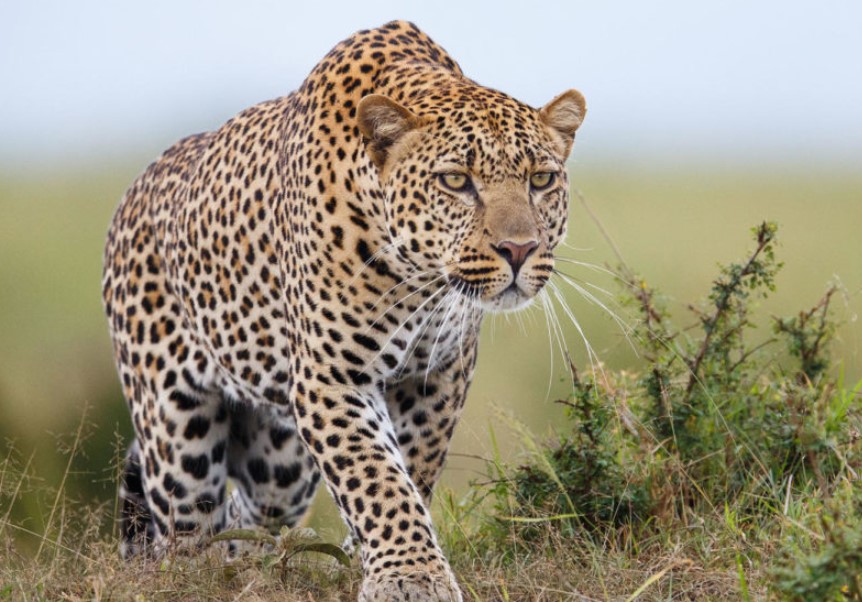The Feline Royalty of Uganda: Exploring the Cat Family – While it is often the majestic elephants, lions, and gorillas that steal the spotlight, Uganda is also home to a diverse range of feline species that make up the cat family.
In this exploration, we delve into the fascinating world of Uganda’s cat family, which includes both big and small cats, each with its own unique story and significance in the country’s ecosystems.
Big Cats of Uganda
African Lion (Panthera leo)
The African lion, often called the “King of the Jungle,” has a significant presence in Uganda. These majestic creatures can be found in several national parks, including Queen Elizabeth National Park and Murchison Falls National Park.
Lions are social animals, and their prides are often seen resting under the African sun or embarking on thrilling hunts across the savannah. They play a crucial role in maintaining the balance of Uganda’s ecosystem, ensuring that herbivore populations are kept in check.
Leopard (Panthera pardus)
Leopards, with their striking rosette patterns, are known for their elusive nature. In Uganda, they are scattered across various protected areas such as Kidepo Valley National Park and Bwindi Impenetrable National Park.
Leopards are skillful and solitary hunters, often relying on stealth and strength to ambush their prey. Their presence in Uganda’s forests and grasslands adds an air of mystery to the country’s wildlife.
Cheetah (Acinonyx jubatus)
The cheetah, known for its incredible speed and slender frame, once roamed the plains of Uganda. However, due to habitat loss and human activities, their population has dwindled, making sightings rare. Conservation efforts are underway to protect these graceful creatures in Uganda, as they are vital to maintaining the health of the ecosystem.
African Wildcat (Felis lybica)
The African wildcat, although smaller than its larger cousins, is an essential part of Uganda’s cat family. Often mistaken for domestic cats, these wildcats are found in various regions of Uganda. They are excellent hunters and play a vital role in controlling rodent populations, thus indirectly benefiting agriculture and human settlements.
Small Cats of Uganda
Serval (Leptailurus serval)
The serval is a medium-sized cat with distinctive large ears and a beautifully patterned coat. They are primarily found in the wetlands and grasslands of Uganda, including places like the Murchison Falls National Park. Servals are known for their exceptional jumping ability, which helps them catch birds and rodents in the tall grass. Their presence contributes to the ecological balance of these habitats.
Caracal (Caracal caracal)
Caracals, with their tufted ears and sleek appearance, are another small cat species present in Uganda. They are distributed across various regions, including the Karamoja sub-region. Caracals are skilled hunters and are known for their ability to take down prey larger than themselves, such as gazelles and young antelopes.
African Golden Cat (Caracal aurata)
The African golden cat is one of the rarest and least-known members of Uganda’s cat family. These cats are incredibly elusive and are predominantly found in the dense forests of western Uganda. Their striking reddish-golden coat sets them apart from other cat species, making them a treasure for wildlife enthusiasts.
African Wildcat (Felis lybica)
The African wildcat, similar to its larger relative, is also found in Uganda’s diverse habitats. Their adaptability allows them to inhabit a range of environments, from grasslands to forests. These cats are integral to controlling rodent populations, making them valuable to local ecosystems and agriculture.
Conservation Efforts
Uganda has made significant strides in conserving its diverse cat family. Efforts include habitat protection, anti-poaching initiatives, and community-based conservation programs. The Uganda Wildlife Authority (UWA) plays a pivotal role in safeguarding these magnificent creatures.
In particular, the UWA has collaborated with international organizations to implement anti-poaching measures and monitor the populations of endangered species like cheetahs and African golden cats. These efforts are essential for maintaining the delicate balance of Uganda’s ecosystems and preserving its unique biodiversity.
The Role of Cats in Ecosystems
The cat family, both big and small, plays a crucial role in Uganda’s ecosystems. They are apex predators, meaning they are at the top of the food chain. This position allows them to control the populations of herbivores and prevent overgrazing, which, in turn, helps maintain the health of the vegetation. Without these apex predators, herbivore populations could explode, leading to habitat degradation and ultimately affecting the entire ecosystem.
Furthermore, the presence of cats, particularly the smaller species like African wildcats, servals, and caracals, helps control rodent populations. This benefit is particularly important for agriculture, as rodents can be a significant threat to crops. Thus, these cats indirectly contribute to food security for local communities.
Challenges and Threats
Despite the ongoing conservation efforts, Uganda’s cat family faces several challenges and threats:
Habitat Loss
Urbanization and agricultural expansion have led to the loss of natural habitats, pushing cats into smaller and more fragmented areas.
Poaching
Poaching, driven by the illegal wildlife trade, remains a significant threat to big cats such as lions and leopards.
Human-Wildlife Conflict
As human populations expand, conflicts between cats and local communities can arise, leading to retaliatory killings.
Climate Change
Climate change can disrupt natural habitats and prey availability, impacting the survival of these cats.
Infrastructure Development
The construction of roads and other infrastructure can fragment cat habitats and lead to increased mortality rates due to vehicle collisions.
Conclusion
Uganda’s cat family, both big and small, adds a layer of intrigue and wonder to the country’s already diverse wildlife. These felines are not only magnificent creatures to behold but also integral to the health and balance of Uganda’s ecosystems.
As we continue to learn more about these elusive cats and the challenges they face, it is imperative that we support and engage in conservation efforts to ensure that future generations can witness the feline royalty of Uganda in all its glory.



Comment (0)